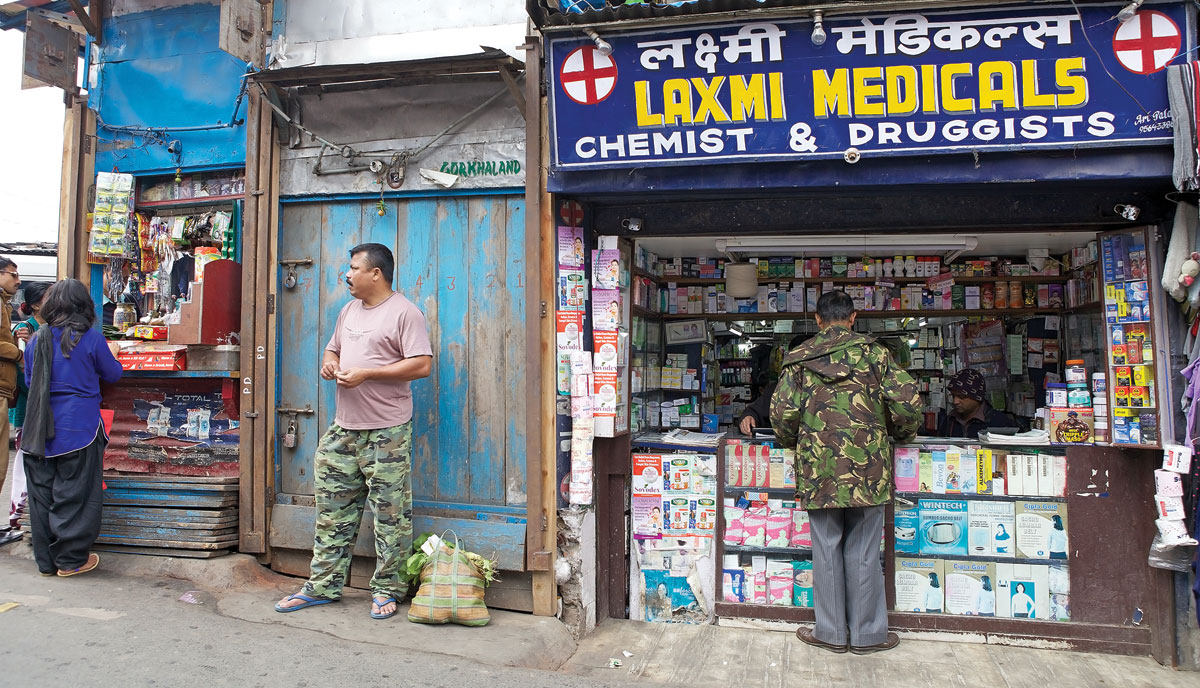IMPROVING PHARMACOVIGILANCE IN INDIA
A man buying drugs at the pharmacy along the street in Darjeeling, West Bengal.
India ranks as the third largest medicine markets of the world as is evident from the fact that it ingests 10% of 3.63 trillion medicines consumed worldwide in 2015. With consumption expected to increase there is an underlying fear of adverse drug reactions (ADRs), writes Priyanka Bhardwaj. (@siliconeer, #siliconeer, #indianpharmacovigilance, #WHO)
Records affirm that in 2013 the country accounted for 2% of globally occurring adverse drug reactions. More such studies throwing light on the subject were conclusively conducted by Vigibase maintained by the Uppsala Monitoring Center, a World Health Organization collaborating center for global drug monitoring.
A dismaying fact emerging from the surveys was that despite ADR ranking as the fourth leading cause of death in the developed world, authorities and patients in India have largely ignored this aspect.
Rather, the very occurrence of ADRs goes unreported thereby negating chances of placing regulatory checks on questionable drugs and containing the scale of the problem.
An immense lack of awareness afflicts both patients and the medical fraternity as they remain inept in recognizing ADRs and reporting these to any one of 150 ADR monitoring centers that exist.
If truth be told, a country, half of whose population purchases pharmaceuticals from chemist stores not run by pharmacists, and consults doctors who are qualified only in the area of alternative medicine and not permitted to prescribe allopathic medicines, has its scientific literature hugely deficient in providing any substantial data on ADRs.![]()
Although a formal monitoring mechanism began 18 years back, it was only in 1997 when India signed up to the WHO Program for International Drug Monitoring.
However reportage of ADRs took on a serious turn only with the launch of the Pharmacovigilance Program of India in 2010.
1998 was an important year in this area as the Supreme Court passed a landmark judgment that expanded the nomenclature of medical negligence to include “not informing the patient of the ADRs of a drug.”
The legal battle revolved around the death of wife of a U.S.-based doctor, Kunal Saha, who died post consumption of a medicine for skin allergy.
At that point of time Saha alleged, “Doctors in India are careless in prescribing medicines, because they know they will not be held accountable for their actions, and are equally careless about reporting ADRs. Physicians prescribe new drugs at the behest of medical representatives even without reading the drug pharmacology, driven by the promise of gifts, despite this being illegal. Patients are prescribed excessive doses, unwarranted drugs or unwarranted combinations.”
In 2015 Indian authorities have ordered that advisory notes for specific medicines be issued.
Considered a great start, it is still not clear how 80,000 drugs that are already in the market will be monitored.
Coupled with above is the reality of legal reversal of bans on drugs being chased by pharmaceutical companies.
The buzz in the corridors of policy making is that a new independent body for the regulation and standardization of Ayurveda, Unani, Siddha and Homeopathic (AYUSH) medicinal products and related degree courses similar to Central Drug Controller instituted for modern scientific medicines is on way.
The adoption of this measure is rooted in numerous reports of spurious AYUSH products such as those claiming to reduce fat and increasing sexual prowess claiming lives besides leaving users with chronic drug resistant issues.
Another grave problem prevalent in the country’s medicine domain is that of substandard drugs.
A data journalism initiative, IndiaSpend reports that one in seven Indian drugs fails to meet the government quality checks.
The official regulatory authority, Central Drug Standard Control Organization, too stands by this fact.
The World Health Organization states that 58.2% of the total health expenditure in the country is borne by the citizens themselves.
Ahmed Nawaz Khan, Assistant Professor in the Department of Pharmacy, Jaypee University of Information Technology, Himachal Pradesh says, “In recent studies we found a substandard medicine incidence of 15.62% for diclofenac sodium and 13.04% for amoxicillin trihydrate.”
Results of tests conducted on 32 samples of diclofenac sodium, a popular pain killer, and then on 46 samples of amoxicillin trihydrate, a fast-moving antibiotic, as published in the December 2015 Journal of Applied Pharmaceutical Science and then by the International Journal of Pharmacy and Pharmaceutical Sciences, prove that this problem is common to both local and reputed brands.
One of the chief causes is that the entire country’s drug-testing needs are catered to by seven national laboratories and 179 ADR monitoring centers that can process just about 15,000 samples per year.
And on the other hand state authorities have indiscriminately distributed drug licenses to manufacturers.
Increasing the number of testing centers and availability of more sophisticated verification technology to smaller firms could be some ways to resolve the problem.
Ensuring patient health with active monitoring and aiding the pharmaceutical industry to achieve its target of $200 billion by 2030 with a new bulk drug policy will have to be incorporated in any wholesome corrective initiative by the government.


